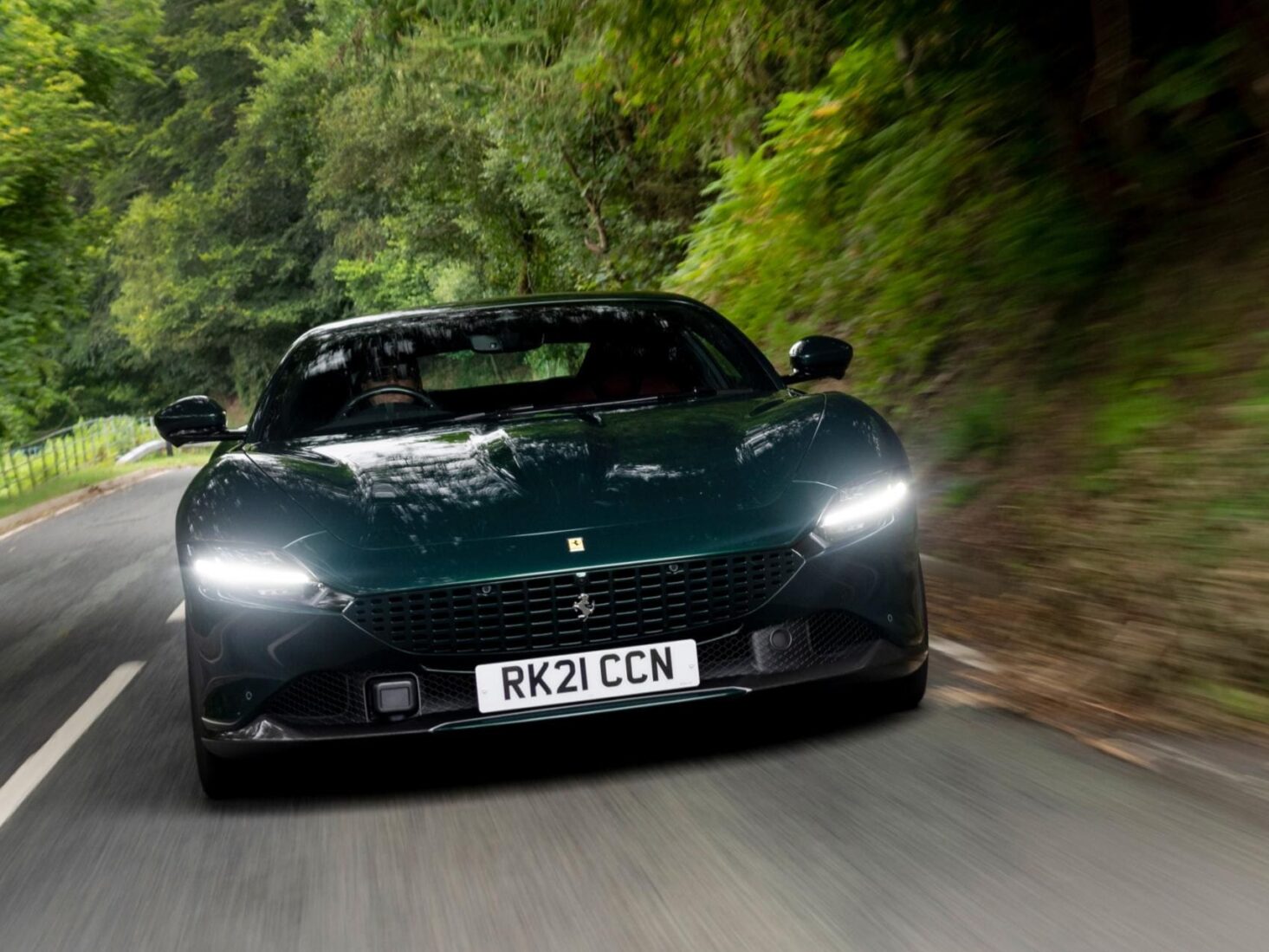
When in Roma: On the road with the 200mph Ferrari Roma
With 612bhp and a top speed of 199mph, the Roma is no slouch, but unlike the classic GT cars it’s inspired by, it requires little skill to drive
The grey tarmac snakes between two banks of blurry foliage. The green grass and purple hedges loom over, closing in as the narrow road winds left, then right. The hills of north Wales then open up and turn into mountains. Daggers of slate point in all directions, looking equally menacing and awesome. I want to pull over and admire the landscape, but my foot is on the loud pedal and I can’t stop. This is the kind of road keen drivers would pay to experience, and I’m behind the wheel of the new Ferrari Roma. There have been worse Tuesday afternoons.
The Roma is a departure for Ferrari of late. It looks entirely different to anything Maranello has ever produced, yet it’s somehow familiar. Its numbers are what you’ve come to expect, but it’s not all about performance. There’s more to it than that. The Roma looks to Ferrari’s past, undoubtedly, but its 20-inch wheels are firmly in the present, both aesthetically and in the way it drives. It might be the most interesting Italian car in quite some time.
In the past, Ferraris were beautiful, elegant pieces of design. From the late 1950s through to the late ’90s, the marque could barely put a foot wrong. There were the low-slung, mid-engine sports cars it offered (the Dino, 355, 360 etc), which carved through the air, and looked like nothing else on the market. Then there were the GTs, the larger, front-engine, long-bonnet tourers (the 250 GT, Daytona, 550 Maranello) the company had been producing since it started making road cars in the late 40s.
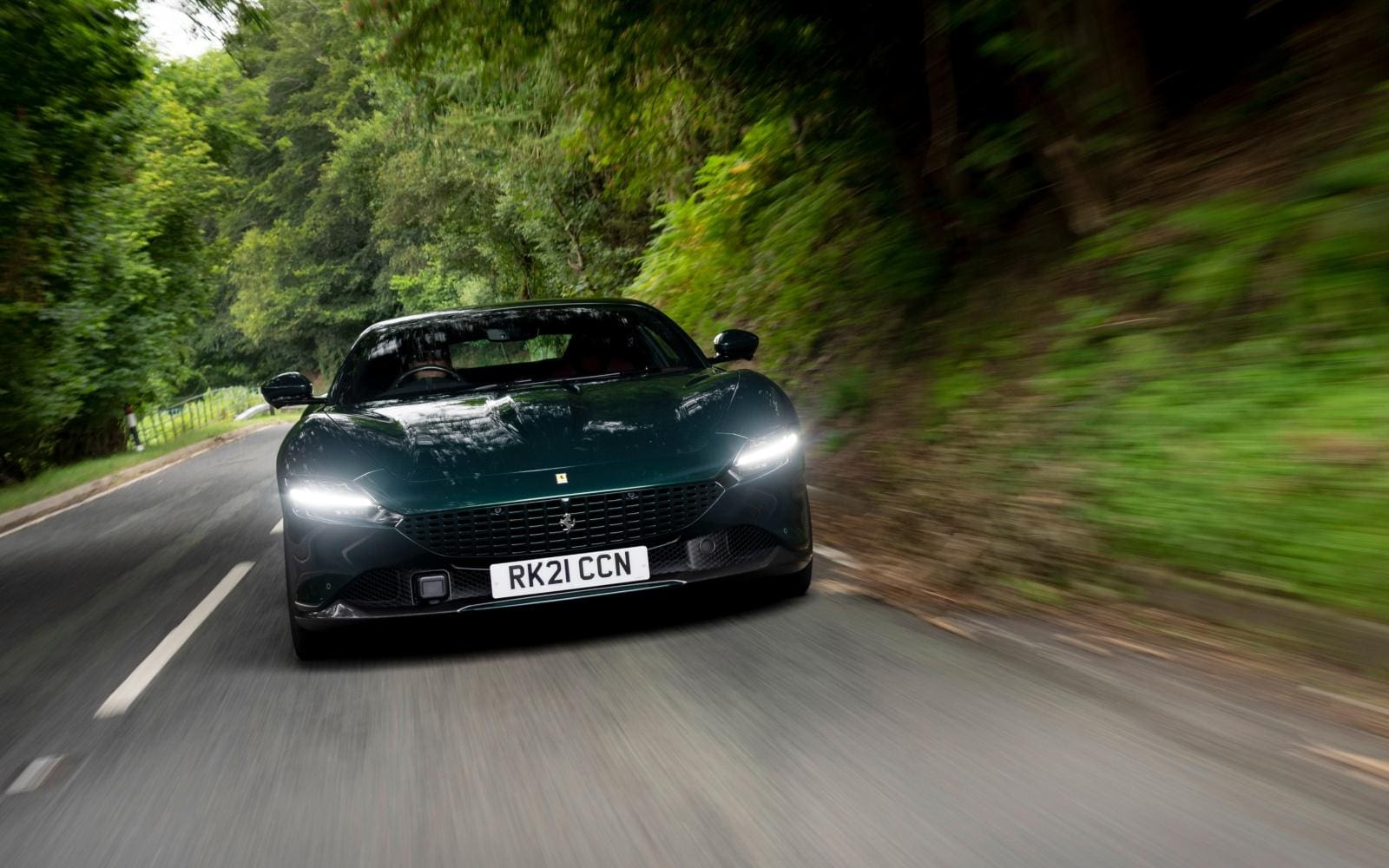
Fast forward to the 21st century and things began to change. Ferrari, a racing marque through-and-through, lost some of its elegance and glamour. Its road cars got quicker, increasingly powerful and more aggressive in design. Cars in its current lineup, such as the 812 Superfast and F8, are shockingly quick, placing great emphasis on outright performance with their incredible 0-62mph speeds and Nurburgring lap times. But in chasing the numbers, that old-school Ferrari magic began to dissipate.
The new Roma breaks this pattern. It harks back to those classic Ferraris of old, but in a way that’s modern and refined. Its long, swooping bonnet references the brand’s grand tourers, specifically the Daytona and 550, to which this car is a natural successor. Compared with modern Ferraris, the Roma is minimalist in design, with clean, understated panels that hug the chassis while merely hinting at the power that lurks below. It’s muscular but not ripped and has presence without shouting. If spec’d in a colour that’s not Rosso Corsa, a casual viewer might even wonder whether it’s a Ferrari at all, which, of late, is no bad thing. It might just be the best-looking new car on the road today. So, how does it drive?
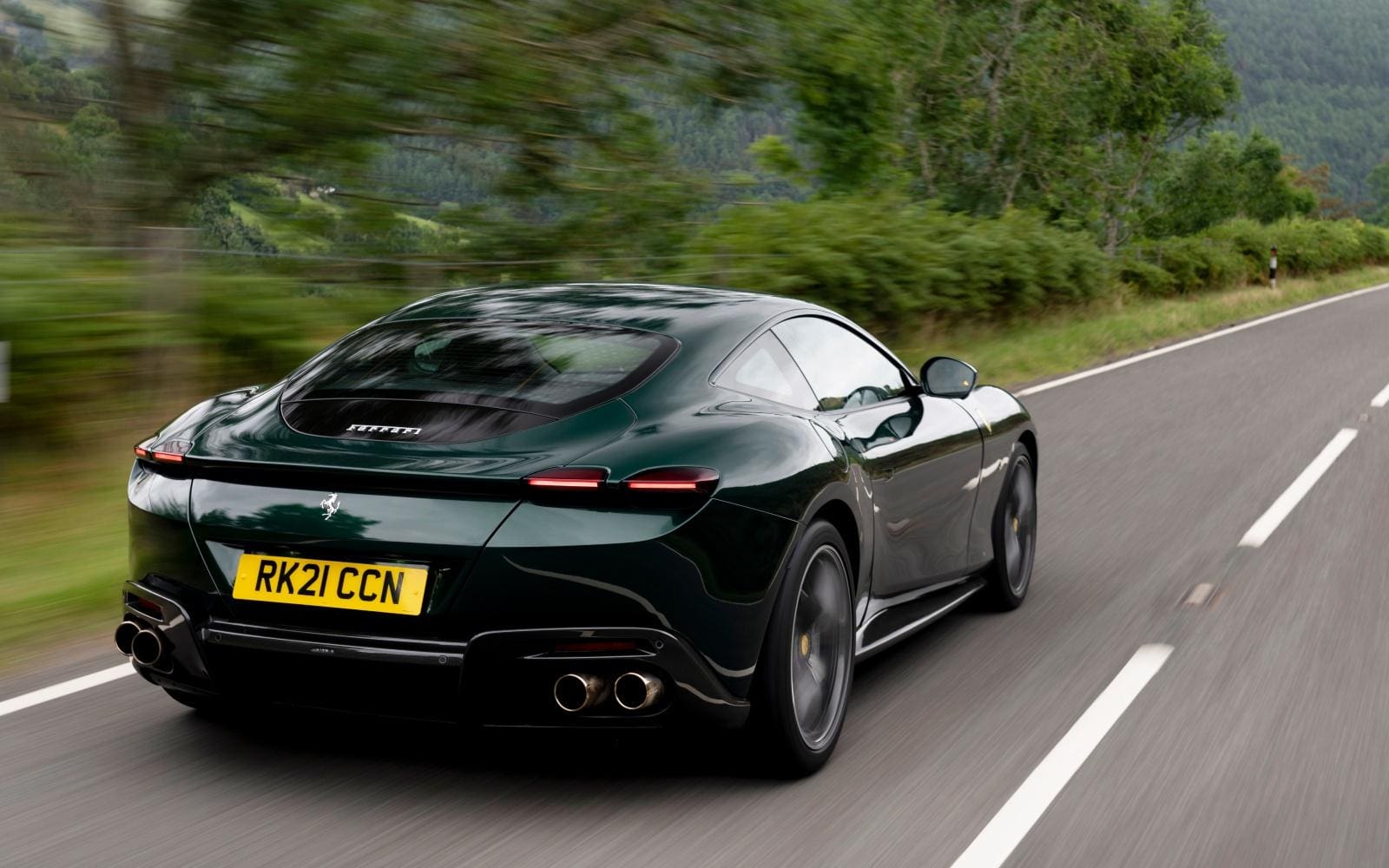
The car digs hard into the ground. A sweeping, fast right-hander reveals the Roma’s cornering prowess. It moves like a train through the bend, stable in its tracks at a speed usually reserved for the motorway. The steering wheel is soft and cold, and grabs the attention as the shift indicator lights blaze a trail across the carbon-fibre top section. I should change gear, but I also should have stopped two miles back to admire the mountains of slate. The Roma isn’t a car you want to stop driving, especially when the roads are this good. I continue further into the depths of Wales, high on the sounds of this Italian V8.
With 612bhp and a top speed of 199mph, the Roma is no slouch. But unlike the classic GT cars it’s inspired by, it requires little skill to drive. It will happily, and quietly, glide around town like a big, expensive go-kart. As with many modern luxury cars, you’ll quickly forget you’re driving a car that costs as much as a three-bedroom house.
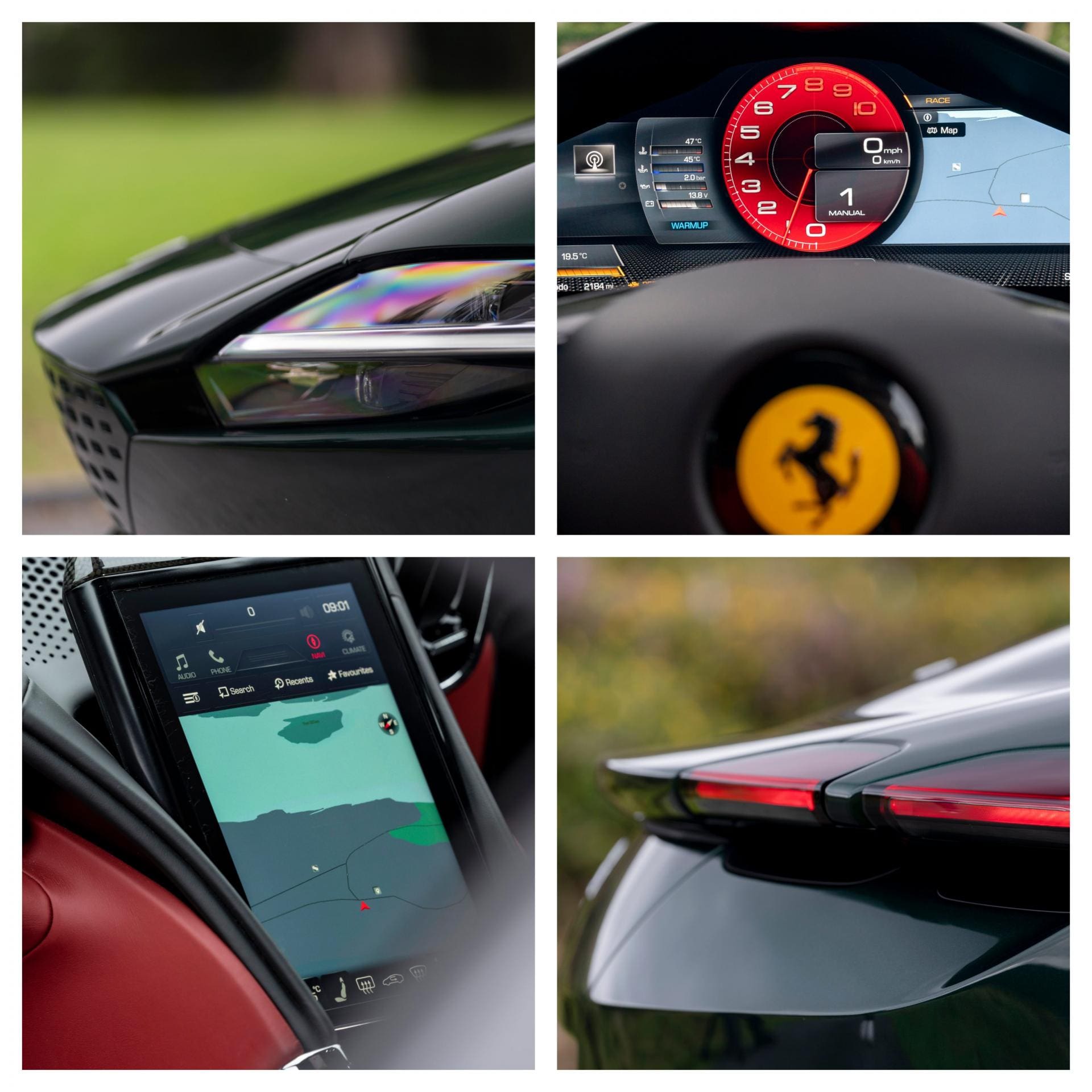
The deep, comfortable leather smells of wealth and success. It hugs you until you forget what potholes are like. There are screens everywhere; even the steering wheel has touch-sensitive buttons. You turn the car on with a touchpad, which regrettably loses some of the drama of the big red start button on older models.
One physical button that is still present, thankfully, is Ferrari’s Manettino switch. Flick it to ‘Race’ mode and the Roma stiffens, offering sharper, more direct steering, quicker gear shifts and a louder exhaust note. Yet it’s still remarkably easy to drive quickly, largely because it’s so predictable. The car’s computer systems ensure that there are no snaps of the wheel or unruly kicks of the rear end. In dry weather, as tested, the Roma flows with the tarmac. It feels far lighter than its 1,570 kg kerb weight and handles smoothly and directly.
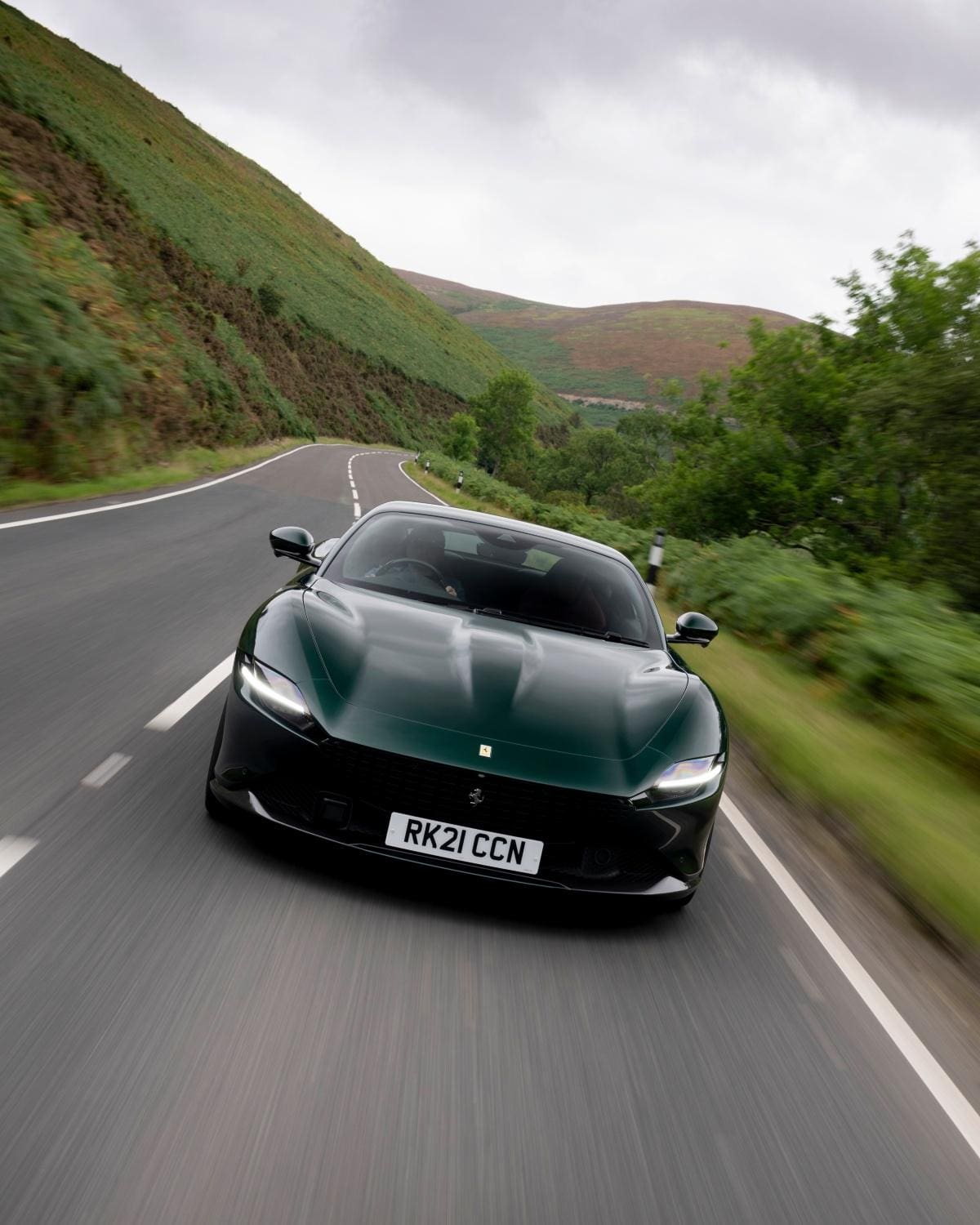
The gears change instantaneously, snapping up or down like a race car, and the exhaust note is addictive, begging you to explore the full range of its 7,500 RPM. It may not sound as raw and exciting as the naturally-aspirated V8s of Ferrari’s yesteryear, but this twin-turbo unit has a distinctive, angry roar that makes the radio defunct.
I let my foot off the pedal but the V8 doesn’t want to slow, and neither do I. Alas, a junction is approaching, and all good roads must come to an end. The steering wheel lights flash brightly as I shift down, with each gear giving one last, angry cry. The right pedal gets its rest, and the carbon ceramic brakes do their job, swiftly and efficiently. The car stops as quickly as it sets off. It’s a machine of extremes, despite its refined design. I stop at the T-junction and remember to breathe. My hands are sweaty and my eyes are dry. The Roma could do this all day, but I couldn’t.
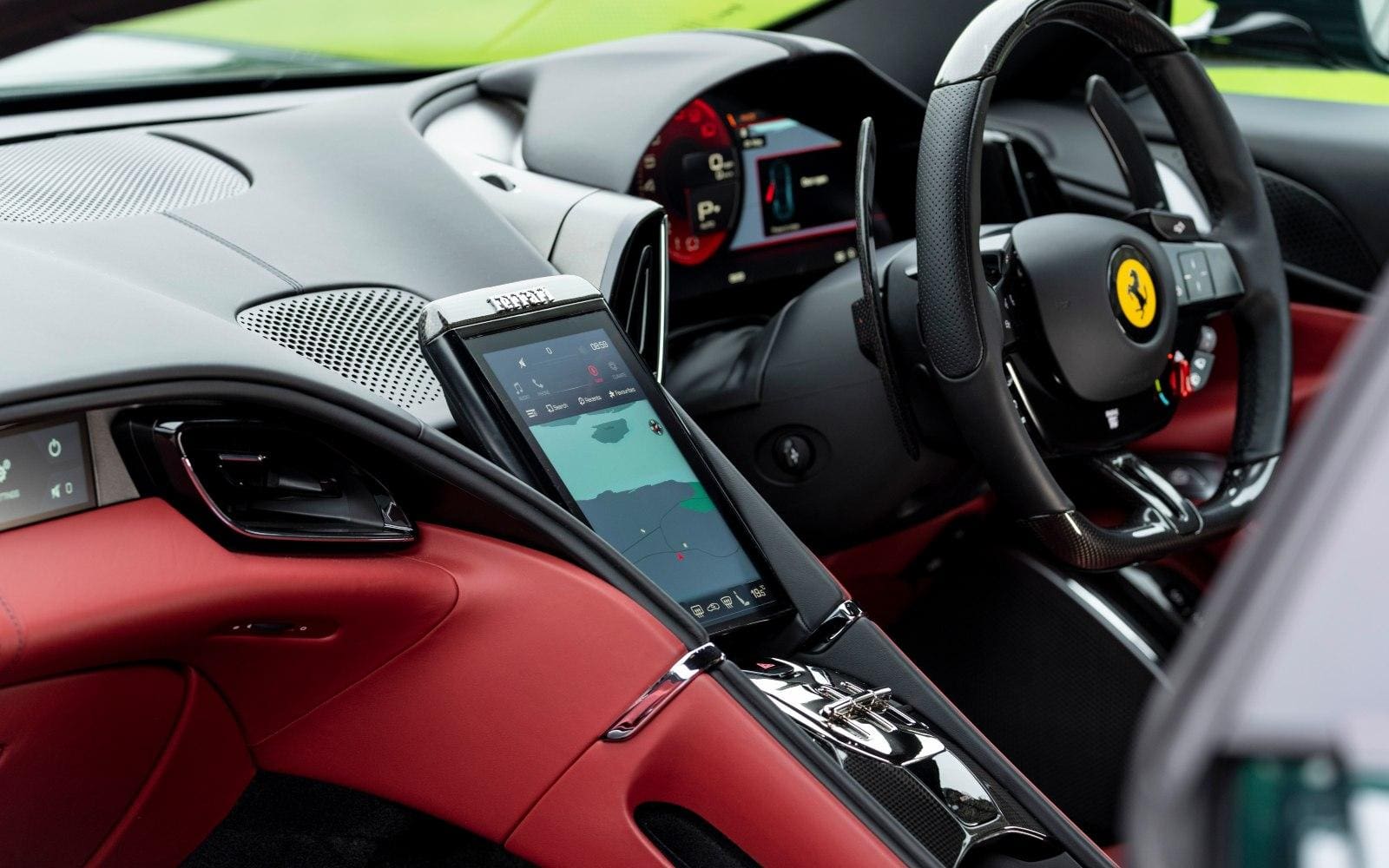
The Vitals
Engine: 3.9-lite V8Combined consumption: 11,2 litres/100kmPower: 612 hp at 7,500 rpm0-62mph: 3.4 secondsTop speed: 199mphPrice: from £171,000
All images Ⓒ Max Earey, ferrari.com









